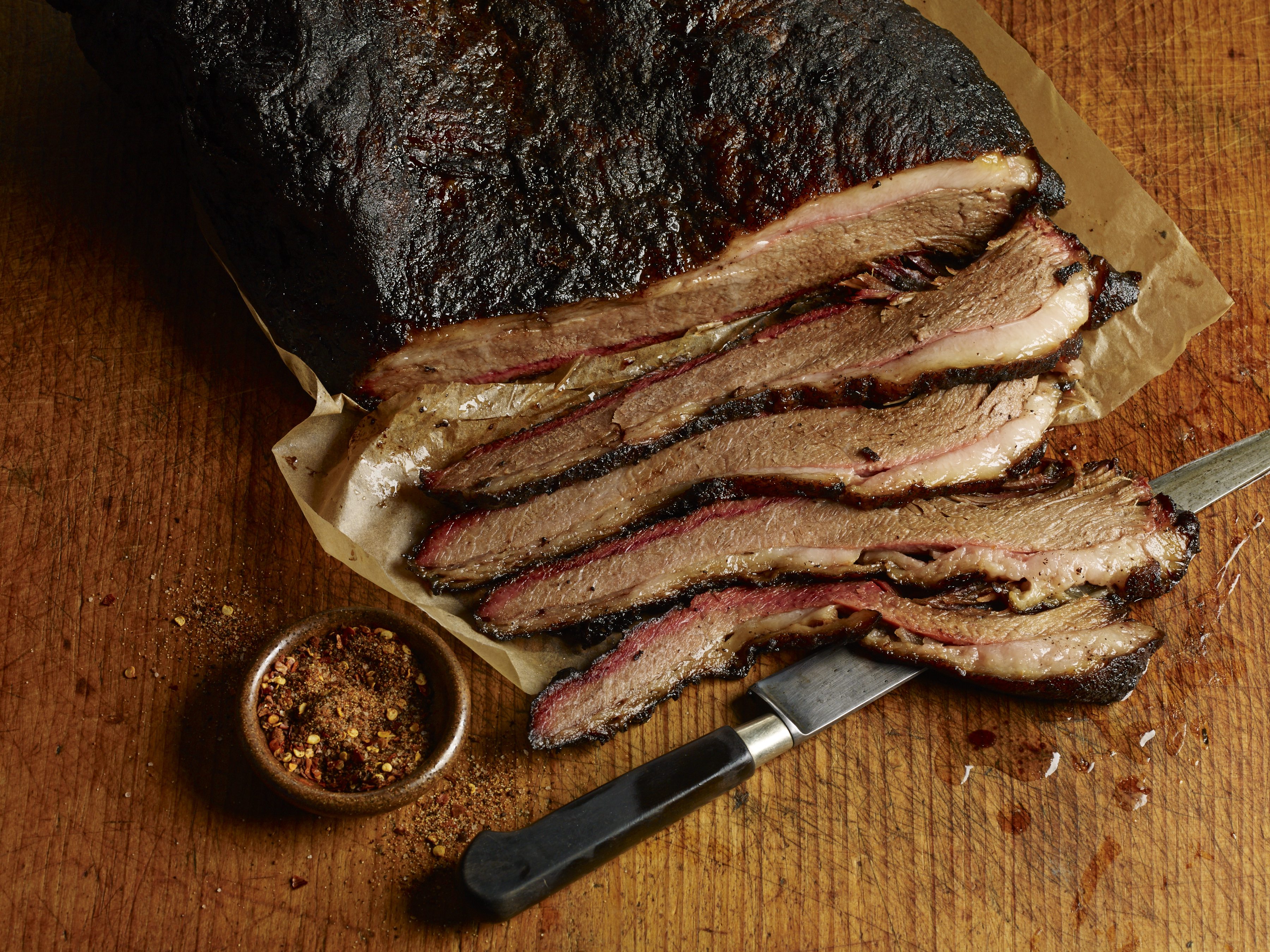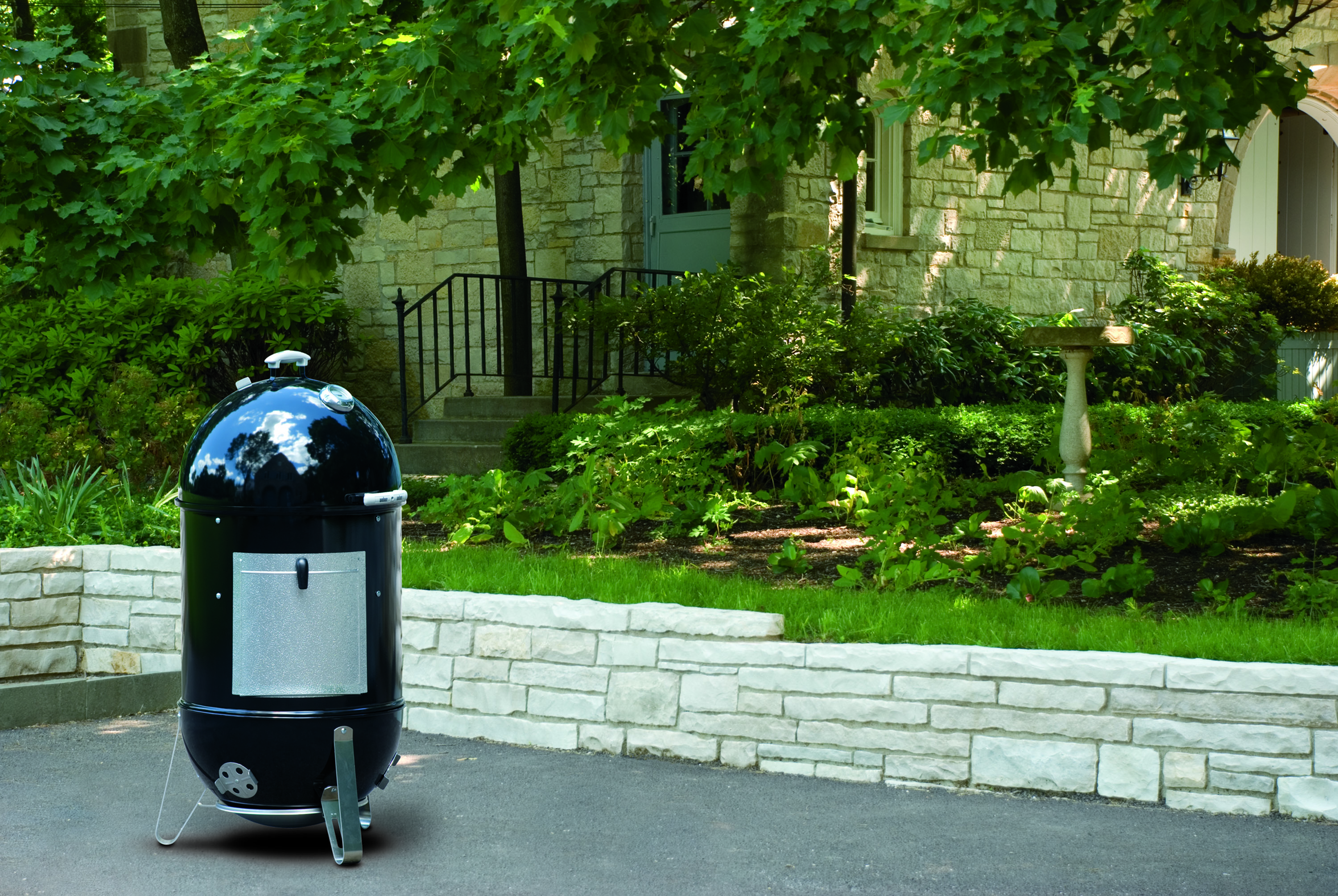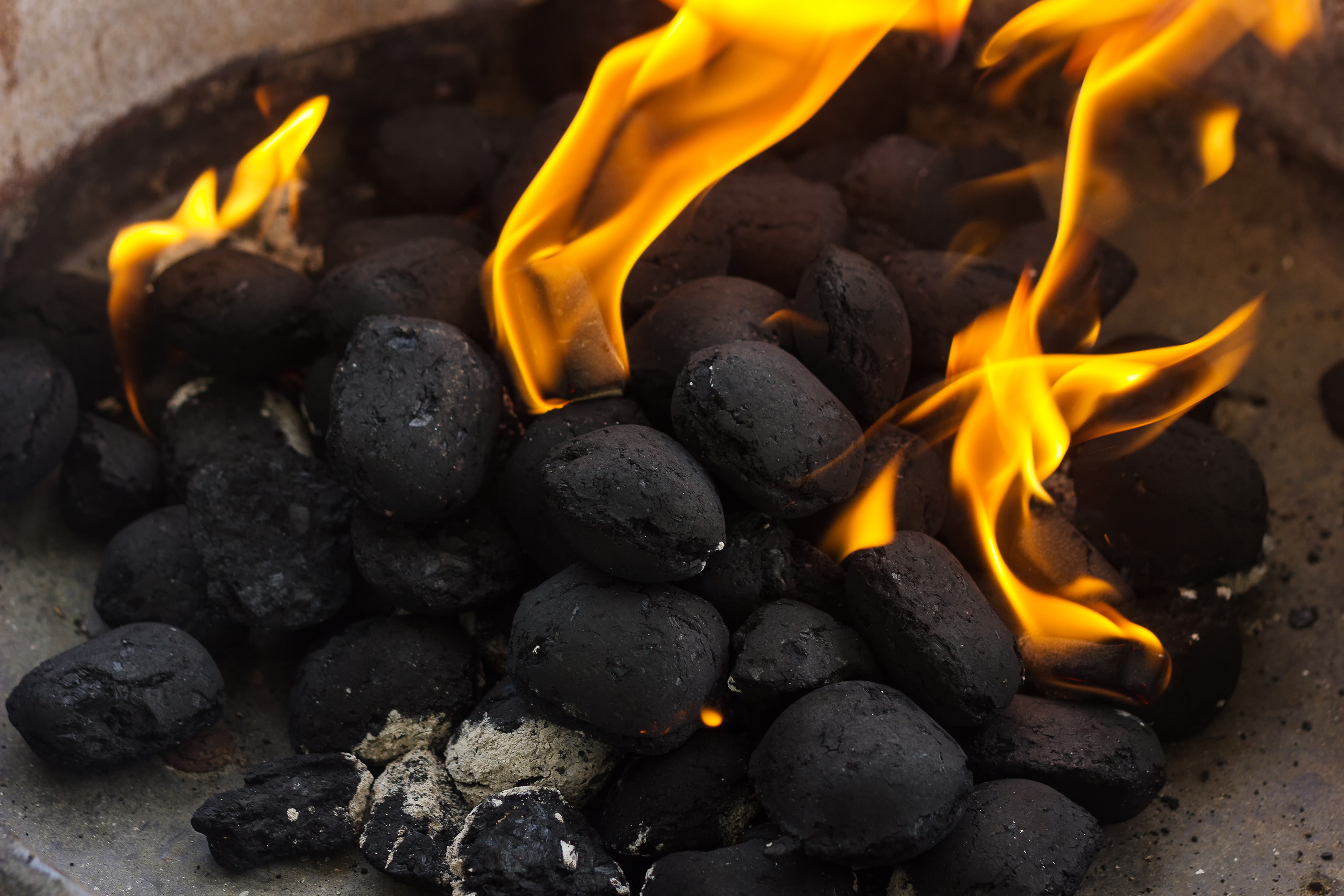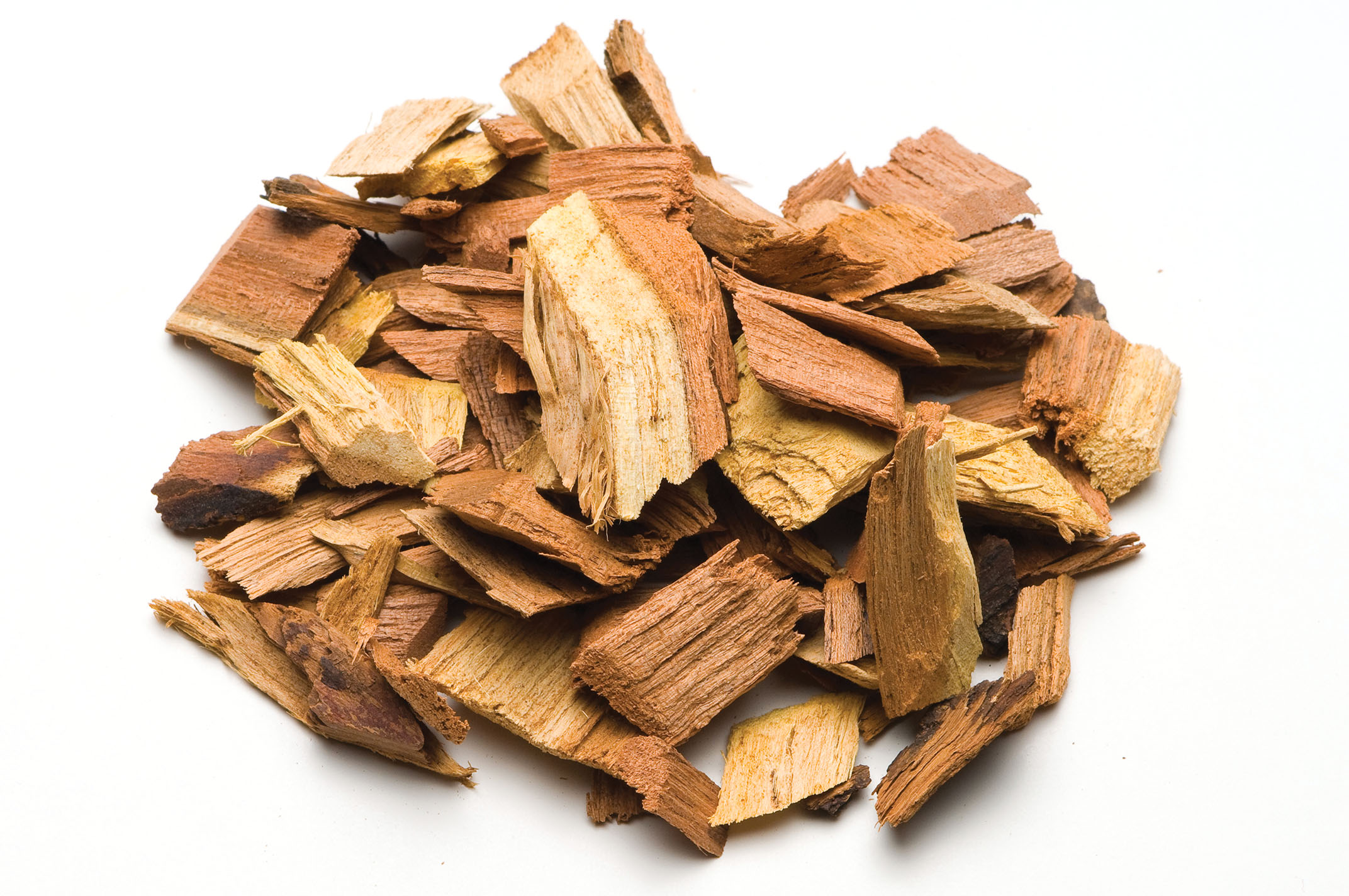Low and slow. The very words make mouths water. Nothing caps off a lazy summer day more perfectly than a meal of sumptuous proportions from your smoker.
And nothing stokes a smoke master’s ego more than some positive comments about his or her smoke ring. That’s the true test—the visible evidence of the smoke’s penetration. The deeper the smoke ring, the more masterful the man or woman at the helm.
If you think nothing tastes better than food cooked with wood, flame, and smoke, you will discover a whole new world of enjoyment and possibilities when you add smoking to your arsenal of cooking techniques.

If you are new to this form of cooking and don’t yet have a smoker, try adapting your grill for items that require relatively short smoking times—1 to 4 hours for sausages, pork ribs, or chicken pieces, for example.
Then once you’re comfortable, jump into the deep end—buy a smoker, get serious, and graduate yourself to briskets, pork butts, and rib roasts. These items will test your abilities to control the heat and smoke with long hours of cooking—6 to 14 hours or more.
Here are some of our frequently asked questions about smoking.
What equipment do I need?

With a wide price range and variety of smokers available, choosing a smoker is a matter of style, capacity, and budget.
Vertical, Water, or Bullet Smokers
This type is constructed in layers—a heat pan on the bottom, a water pan in the middle, and one or two grill grids in the next higher layers. A medium-sized bullet smoker can handle up to 50 pounds of food at a time and can cost as little as $30.
Vertical smokers, however, must be tended carefully because most models lack ventilation openings. There is only a small door for loading fuel and the lid. Learning to create updrafts in this type of smoker takes practice. Vertical smoking, though, has the hidden benefit that the layers of food baste each other from the top down. However, rotating the grids every so often from bottom to top is a good idea, although it’s rather cumbersome.
Brinkmann, Weber (probably the best air-circulation controls), and Charbroil offer the widest selection of vertical wood/charcoal and electric smokers. Brinkmann offers a great trade-off in the wood vs. electric debate by offering an electric heat coil to convert a wood-burning bullet on the fly.
Horizontal Smokers
This type consists of a side firebox and a separate smoking chamber, and it’s the type most often used by championship BBQ teams.
The main cost factor is the thickness of the steel used—the thicker the steel, the longer it will retain heat, the more easily the temperature is regulated, and the more efficiently it will cook. The side firebox makes it easier to add fuel and manage the heat and smoke. The firebox can also be used as a grill for direct cooking.
Expect to pay at least $150 or up to $1,500 or $2,000 for a top-of-the-line, heavy-duty smoker designed for home use. But just as some people buy restaurant-quality ovens and kitchenware, serious BBQ-ers buy competition-worthy smokers—and in that case, the sky’s the limit!
Combination Smokers
There are also combination smokers—a side firebox and a vertical smoking chamber, or a side firebox with horizontal and vertical smoking chambers.
Carey Bringle, our friend and team captain of the Peg Leg Porker BBQ team, uses both horizontal and combination smokers. His combination smoker consists of a side firebox and a double-wide, side-by-side commercial refrigerator that he had custom-retrofitted to become a wood-fired, electronically heat-controlled smoker.
Brinkman and New Braunfels are probably the most widely available and span the consumer and commercial markets with models to meet the needs of both. Try your favorite search engine and you should find a wealth of resources, from mass-marketed brands to hand-crafted smokers (especially from companies in Texas).
What type of cooking fuel should I use?
Wood/Charcoal

Hardcore BBQ-ers wouldn’t choose anything else, but it’s also the high maintenance method. It takes time to know your smoker and how best to maximize its efficiency.
Electric or Gas
Only requires chips, pellets, or saw dust for smoking. The heat source is constant and temperature is most accurately regulated.
How do I choose a wood for smoking?

Combine a robust wood smoke with a sweet top note of a fruit wood or fresh herb—mesquite and apple; hickory and maple; pecan and apple or any fruit wood; oak and cherry or fresh rosemary; or alder and fresh dill.
Wood Selection Tip: Check out BarbecueWood.com for a great source of smoking fuels.
What if I don’t want to buy a smoker?
The fact of the matter is that meat takes on most of the smoke during the first 3 to 4 hours. After that it’s mostly a matter of cooking low-and-slow until the meat is done.
In lieu of an actual smoker, you can adapt a Weber kettle as a stand-in smoker. That way, you can smoke the meat for the first 3 to 4 hours, then finish it in a roasting pan in your oven and still have a good smoky flavor.
Build the fire on one side of the kettle. On the other side, put a foil drip pan in the bottom. Place the meat on the grill grid over the drip pan. Soak apple and mesquite chips in water for at least 30 minutes before using them. Distribute 3/4 to 1 cup of chips on the hot coals every 15 to 30 minutes, or as you see the smoke begin to thin out. Or get a smoking box for this purpose—a metal box that holds wood chips for smoking and can be found in most stores that sell grill accessories.
When transferring to the oven, double-wrap the brisket in foil (that is: make a crisscross of two pieces of foil large enough to cover the entire brisket. Place the brisket in the middle of the crisscross and fold in the sides—tight at the bottom, loose at the top. This way you can continue to mop the brisket as it cooks, about once every 25 to 30 minutes for a whole brisket or 15 to 20 minutes for a 1st-cut brisket. With the double-wrapped foil, you should be able to capture most of the mop sauce and cooking juices that accumulate in the bottom, which can be the basis of a highly flavorful BBQ dipping sauce.
If you are smoking the brisket over mesquite and apple wood or finishing it in the oven (at 200° to 225°F), you should allow about 1 hour of cooking time per pound of brisket. An internal temperature of 190° to 195°F will get you the fall-apart, juicy texture everyone will marvel at.
Looking for different regional styles of barbecue, check out our article on southern BBQ styles.



Leave Your Response